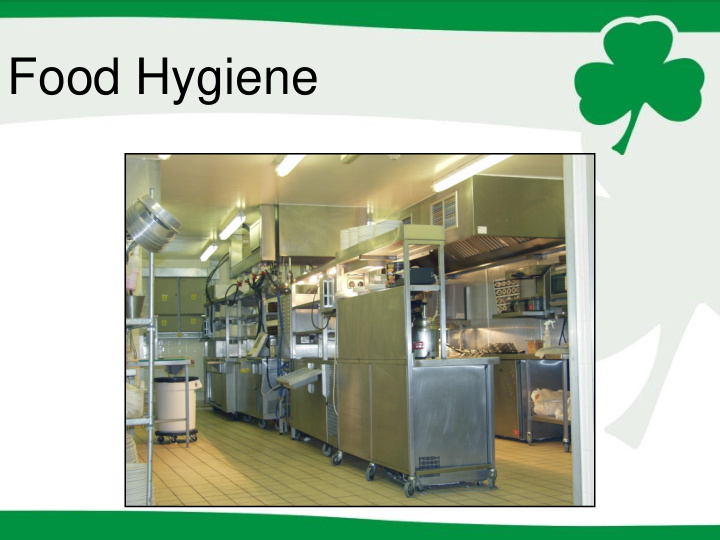



Food Hygiene
Food Hygiene The NHS report 96,000 cases of foodborne illnesses in a year resulting in 20,000 hospitalisations & 500 deaths. The FSA estimates a total of 850,000 cases per year. 5.5 million people a year believe they have had food poisoning. ref: Food Standards Agency
Food Hygiene Provision of hygienic conditions to prepare food is law. Poor hygiene will lead to illness. Chefs / catering managers / owners have a legal responsibility.
Food Safety Regulations Local councils run a marking system showing the standard of cleanliness of an establishment. Scored from excellent, good, satisfactory, poor and very poor. Account opportunities for establishments with less than a good score. Ignorance of the law is no defence in the event of prosecution.
Critical Control Points 1. Risk Assessment and Control (HACCP) – dictates cleaning schedule. 2. Product Separation. 3. Temperature Control. 4. Training – hazard awareness & control is vital. 5. COSHH – using the wrong product can affect food & cause surface damage. 6. Personal Hygiene. 7. Cleaning & Disinfection – regular & accountable.
Food Hygiene The cleaning schedule - daily
Food Hygiene The cleaning schedule - weekly
Food Hygiene The cleaning schedule - monthly
The Cleaning Schedule Example Included at the back of the booklet
Simplicity Five core areas in every kitchen. Options within each category. 1 Daily cleaning / degreasing. 2 Sanitiser. 3 Skincare. 4 Heavy duty applications. Dishwashing – manual / automatic. 5
Cleaners / Degreasers Ubik 2000 1 Universal food area degreaser. Anti-slip floors, walls and tiles. Dilutable and highly concentrated. Safe on stainless steel.
Cleaners / Degreasers Sola-Bac (Bactericidal) 1 Dilute 1:200. A powerful cleaner and sanitiser. Rinse off product. Removes grease and hardened oils. Tested to BSEN 1276.
Cleaners / Degreasers Foam Cleaner (Bactericidal) 1 A ready to use cleaner and degreaser. Cleans and sanitises in one application. Eliminates the potential errors of dilution. Aluminium safe.
Recommend
More recommend